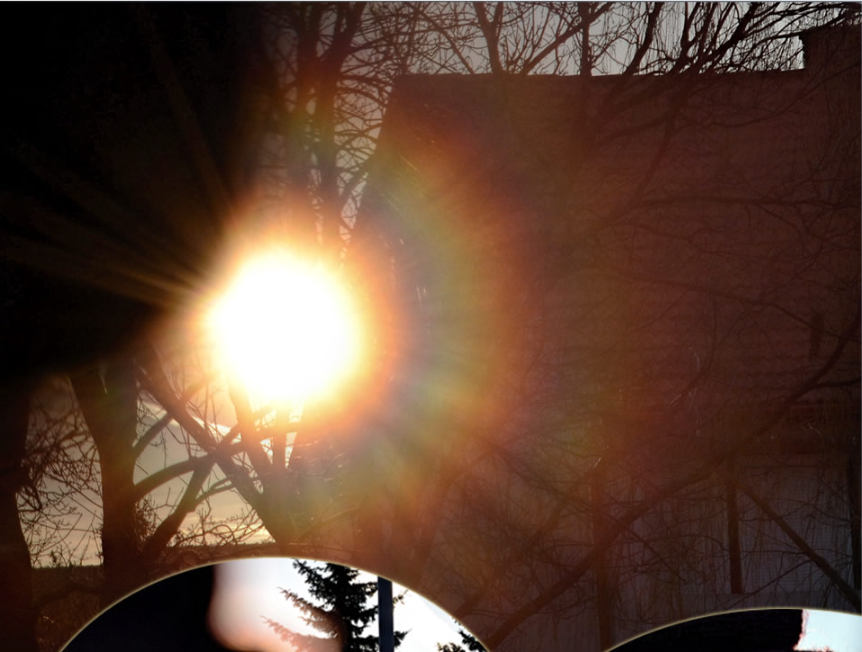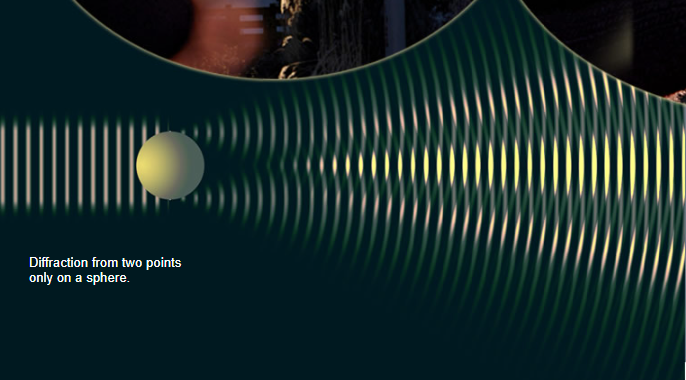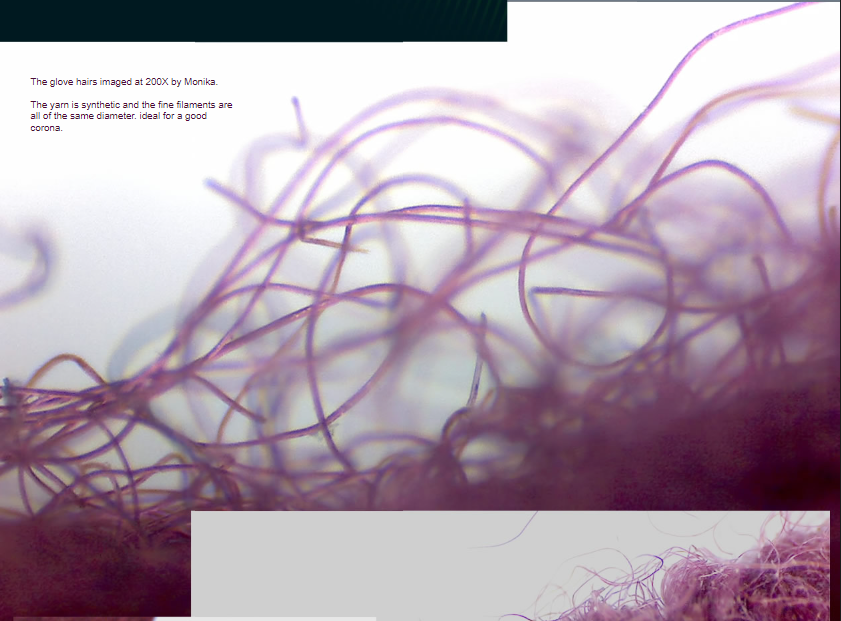Glove hair corona - OPOD
Glove Hair Corona: An Unexpected Atmospheric Phenomenon
Have you ever seen a corona surrounding the sun or the moon? It's a mesmerizing sight, usually created by the diffraction of light around small water droplets in the atmosphere. However, atmospheric optics can sometimes surprise us with unexpected phenomena. One such phenomenon is the glove hair corona, which was accidentally discovered by Monika Landy-Gyebnar in Hungary.
Monika's encounter with the glove hair corona began when she attempted to capture a photo of a song thrush perched on a treetop. However, the sunlight was too strong, making it difficult for her to see through the camera lens. To block the intense sunlight, she shaded the lens with her gloved hand. Little did she know that her knitted glove, adorned with numerous thin hairs, would produce a stunning corona effect. Initially, she mistook it for her breath causing the phenomenon due to the chilly morning air.
Curiosity piqued, Monika conducted further experiments indoors with the hairy gloves and a halogen lamp. To her amazement, the corona appeared once again. This observation confirmed that it was indeed the fine hairs on her glove that were responsible for creating the corona effect.
The strength of the glove hair corona is most pronounced when the camera lens is focused at infinity, which is the effective distance for any corona produced by near parallel light. When Monika focused the lens on the individual hairs themselves, they glowed brightly as they diffracted light around them, but no corona was visible. This suggests that the diffraction of light by these hairs plays a crucial role in producing the captivating corona effect.
In most cases, coronae are formed by the diffraction of light around the edges of small water droplets. However, Monika's discovery demonstrates that coronae can also be created by diffraction from other objects, such as fine hairs. The diffraction occurs when two points on the object's surface cause outgoing diffracted spherical waves to overlap and interfere with each other. The resulting interference pattern produces the familiar coronal pattern that we observe.
Interestingly, the scattering particles responsible for creating coronae do not necessarily need to be transparent or even spherical. They can take various forms, including pollen grains, spores, or even telescope lenses. In the case of the glove hair corona, the fine synthetic hairs on the knitted glove serve as the scattering particles. Had the hairs all pointed in the same direction, the corona, if formed at all, would have been elongated.
If you're intrigued by atmospheric optics and want to explore this phenomenon further, you can conduct your own experiments with hairy objects. Remember to focus your eyes or camera on infinity to enhance the corona effect. By observing and documenting different materials and their interaction with light, you might stumble upon your own unexpected atmospheric marvels.
The glove hair corona serves as a reminder that nature often surprises us with its intricate and captivating phenomena. Through keen observation and experimentation, we can unravel the mysteries of atmospheric optics and gain a deeper understanding of the world around us. So keep your eyes open, explore the wonders of light diffraction, and embrace the beauty of unexpected discoveries.

Glove Hair Corona
Images from Hungary by Monika Landy-Gyebnar.
All is not what it seems. The early morning sun is ringed by a beautiful corona. But it is not from clouds or mist.
Monika tells the story – “..I heard a song thrush at a treetop and wanted to take a picture of it. However, I could not see it because the sunshine was too strong. I shaded the Sun from the camera lens with my gloved hand - a knitted glove with lots of thin hairs on the yarn. These hairs produced the corona! At first I thought it was made by my breath because it was a chilly morning.
The camera focus was far beyond my hand and that is when the corona showed itself best. I took other pictures close focused on the thin hairs and no corona was visible that way."
Monika then experimented indoors in the warm with the hairy gloves and a halogen lamp. The corona appeared again.
All images ©Monika Landy-Gyebnar

The corona is strongest when the lens is focussed at infinity. That is the effective distance of any corona produced by near parallel light.
When the lens is focussed on the hairs themselves we see them glowing bright as they diffract light around them - but no corona.

Diffraction from two points only on a sphere.
Most coronae we see are produced by light diffracted around the edges of small water drops. At left is a much simplified instance of light diffracted by just two points on a droplet's rim. The two outgoing diffracted spherical waves overlap and interfere. There is brightness where the overlapping wave crests are in phase. Waves scattered from the whole of the drop periphery produce the familiar coronal pattern.
Periphery is the key. The scattering particles need not be transparent or even spherical. Pollen grains or spores produce coronae - even telescope lenses. Here, the diffraction is by fine hairs. Had the hairs been all pointing in the same direction the corona (if it formed) would have been much elongated.
Experiment with hairy objects. But focus the eyes or camera on infinity.

The glove hairs imaged at 200X by Monika.
The yarn is synthetic and the fine filaments are all of the same diameter. ideal for a good corona.

Note: this article has been automatically converted from the old site and may not appear as intended. You can find the original article here.
Reference Atmospheric Optics
If you use any of the definitions, information, or data presented on Atmospheric Optics, please copy the link or reference below to properly credit us as the reference source. Thank you!
-
<a href="https://atoptics.co.uk/blog/glove-hair-corona-opod/">Glove hair corona - OPOD</a>
-
"Glove hair corona - OPOD". Atmospheric Optics. Accessed on November 23, 2024. https://atoptics.co.uk/blog/glove-hair-corona-opod/.
-
"Glove hair corona - OPOD". Atmospheric Optics, https://atoptics.co.uk/blog/glove-hair-corona-opod/. Accessed 23 November, 2024
-
Glove hair corona - OPOD. Atmospheric Optics. Retrieved from https://atoptics.co.uk/blog/glove-hair-corona-opod/.